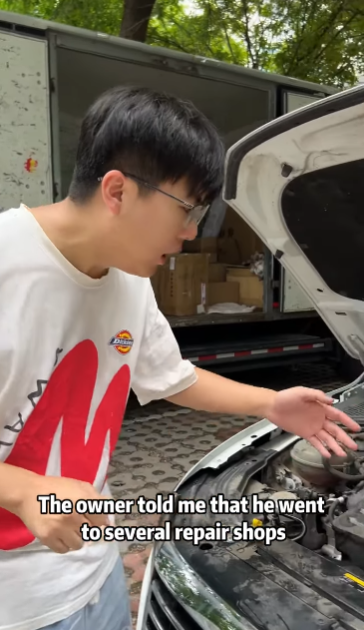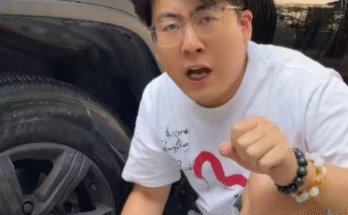
Have you ever started your car, only to feel it shaking violently as if it were struggling to run? This kind of vibration can be both alarming and dangerous, especially if you’re unsure of the cause. While there can be several reasons for a shaking car, one of the most overlooked – and easily fixed – culprits is a dirty or clogged throttle body.
Let’s dive into why your car might be shaking and why cleaning the throttle body could solve the problem.
What Causes a Car to Shake Violently?
A car that shakes while idling, accelerating, or even at a standstill may be signaling several potential issues. These might include:
- Worn-out spark plugs
- Loose engine mounts
- Damaged suspension components
- Unbalanced wheels or misaligned tires
- Dirty fuel injectors
- Clogged air filters
- A dirty throttle body
Among these, a dirty throttle body is one of the least expensive and easiest problems to fix. But it’s also one of the most commonly ignored by drivers and technicians alike.

Understanding the Throttle Body
The throttle body is a component of your car’s air intake system. It regulates the amount of air that enters the engine. When you press the gas pedal, you’re essentially commanding the throttle body to open and allow more air into the engine, which mixes with fuel to produce power.
Over time, however, the throttle body can accumulate carbon deposits, oil residue, and dirt. This buildup can cause the throttle plate to stick or not open smoothly, which interferes with proper airflow and leads to rough idling, poor acceleration, and shaking.
Symptoms of a Dirty Throttle Body
Besides shaking, a dirty throttle body can cause:
- Rough or erratic idle
- Poor fuel economy
- Delayed acceleration
- Stalling at low speeds
- Check engine light (CEL)
If your car is shaking and experiencing any of the above issues, the throttle body should be one of the first components you inspect and clean.
Why a Dirty Throttle Body Causes Shaking
When the throttle body is dirty, it can’t regulate airflow accurately. Your car’s engine needs a precise air-to-fuel ratio to operate smoothly. If less air enters the engine than needed, the mixture becomes “rich,” meaning there’s too much fuel compared to air. This imbalance causes the engine to run unevenly and shake, especially at idle when airflow is most critical.
The engine may also overcompensate with fuel injection, causing sputtering or hesitation. That imbalance results in an unstable idle and noticeable vibration. Cleaning the throttle body restores that balance, allowing the engine to breathe freely and run smoothly.

How to Clean the Throttle Body (DIY Guide)
If you’re comfortable with basic tools and working under the hood, cleaning your throttle body is a simple task you can complete in about 30–45 minutes.
Tools and Supplies Needed:
- Throttle body cleaner spray (available at auto parts stores)
- Clean microfiber cloths
- A small soft brush (like a toothbrush)
- A flat-head screwdriver or socket set (to remove intake components)
- Safety gloves and eyewear
Steps:
- Locate the Throttle Body
Open your hood and follow the air intake hose from your air filter box to where it connects to the engine. The throttle body is typically right before the intake manifold. - Remove the Air Intake Hose
Use your screwdriver or socket to loosen the clamps and detach the air hose from the throttle body. - Inspect the Throttle Plate
Look inside the throttle body – you’ll likely see black soot and residue around the throttle plate and bore. - Spray the Cleaner
With the ignition off, spray throttle body cleaner inside the housing. Open the throttle plate manually (if possible) and clean both sides thoroughly. - Wipe and Scrub
Use your cloth or brush to scrub away any grime. Be gentle – you don’t want to damage sensors or the plate mechanism. - Reassemble and Test
Once everything is clean and dry, reattach the air intake hose and start your engine. It may take a few seconds to stabilize, but the improvement should be noticeable.

Professional Cleaning vs. DIY
If you’re not comfortable cleaning the throttle body yourself, many mechanics offer the service for a reasonable fee. A professional cleaning may also include resetting the throttle position sensor (TPS), which helps ensure optimal engine response.
In severe cases, particularly when carbon buildup is extensive or the throttle body is electronically controlled (drive-by-wire), professional cleaning or replacement might be necessary.
Preventing Future Problems
You can minimize the chances of a dirty throttle body by:
- Using quality fuel and additives that reduce carbon buildup
- Changing your air filter regularly to prevent dirt from entering the intake
- Cleaning the throttle body every 30,000–50,000 miles, or as recommended by your manufacturer
Also, regular maintenance checks can catch early signs of buildup before they cause shaking or poor engine performance.

What If the Shaking Doesn’t Stop?
If cleaning the throttle body doesn’t stop your car from shaking, you’ll need to consider other potential causes. A diagnostic scan using an OBD-II reader can help detect misfires, sensor failures, or vacuum leaks. You may also need to inspect your:
- Motor mounts – A damaged mount can cause excessive vibration
- Spark plugs and coils – Worn ignition parts can lead to uneven firing
- Fuel system – Dirty injectors or low pressure can affect combustion
- Tires and suspension – Misaligned or unbalanced wheels may cause shaking, especially at higher speeds
Still, in many cases, drivers report immediate improvement after cleaning the throttle body – especially if the car was shaking during idle or light acceleration.

Final Thoughts
If your car is shaking violently and you’re unsure of the cause, don’t panic. Start with simple and inexpensive checks. A dirty throttle body is a very common issue, especially in high-mileage or poorly maintained vehicles, and it’s something you can often fix yourself with a little time and care.
By taking action early, you not only eliminate that annoying vibration but also restore smoother performance, better fuel economy, and a more enjoyable driving experience.
So the next time your car feels like it’s trembling at every stoplight, remember: sometimes the solution isn’t replacing expensive parts – it’s just cleaning the one that’s already there.



